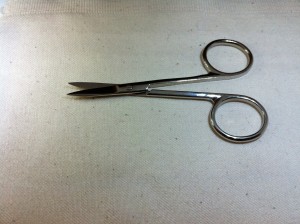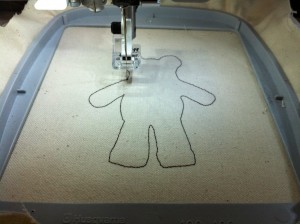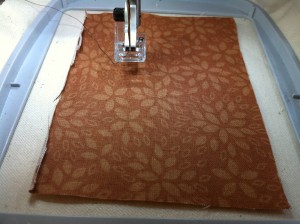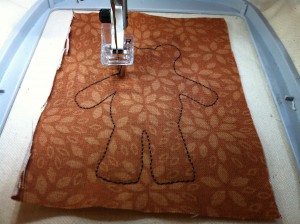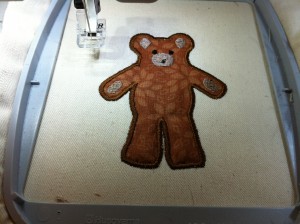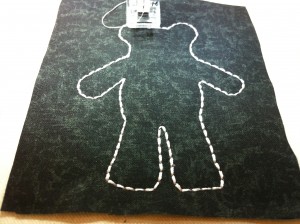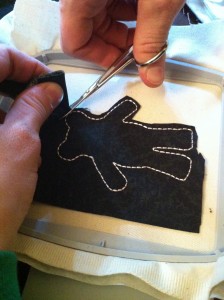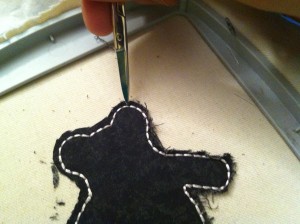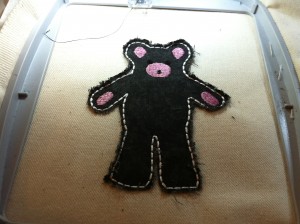I put this appliqué tutorial together to show everyone the basics. I am explaining both the raggy and satin stitch. In a satin stitch appliqué the raw edges are completely covered with a large stain stitch and in a raggy appliqué (depending on the fabric used) the raw edges are left out to fray giving a completely different look.
I love raggy appliqué. In my opinion it is the best option for embroidering on knit material, it is so much more flexible. In my raggy tutorial I use just a cotton fabric so you can see the cuteness of the raw frayed edges. Using knit or felt, in place of the cotton, the edges will not fray.
For either appliqué the only necessity is (my opinion) a small pair of scissors. These help you cut the fabric as close as possible to the tack down stitch.
Hoop with the appropriate stabilizer and either hoop your fabric or do a fix stitch to keep it in place.
When you start the design it will begin with a dieline. A dieline is a simple stitch on your fabric that indicates where you place the appliquéd fabric.
Just cut an approximately sized square and place it over the dieline.
Next, your machine will prompt you to change the thread color, this is not necessary. It is programed this way to make your machine stop so that you can add the appliqué fabric. Then the machine will stitch a tack down. The tack down stitch is a strong outline of the finished design.
Next, trim the fabric as close to the tack down stitch as possible. This step is pretty important because if you do not cut very close the fabric might fray outside the satin stitch.
The next step is to follow the thread changes. And that's that.
Raggy Applique
The raggy appliqué starts out similar to the satin stitch with a dieline and fabric placement over the dieline. Then instead of a tack down a (usually) decorative stitch is made, for this design it is a redwork stitch.
Next, instead of cutting the fabric close to the stitch leave enough for the fabric to fringe or fray.
Now fray the edges. I use the tip of my scissors and rub along the edges.
Next follow the thread changes and it's all done! When it's completed it helps to rub a lint roller over it to pick up the frayed fabric bits.
